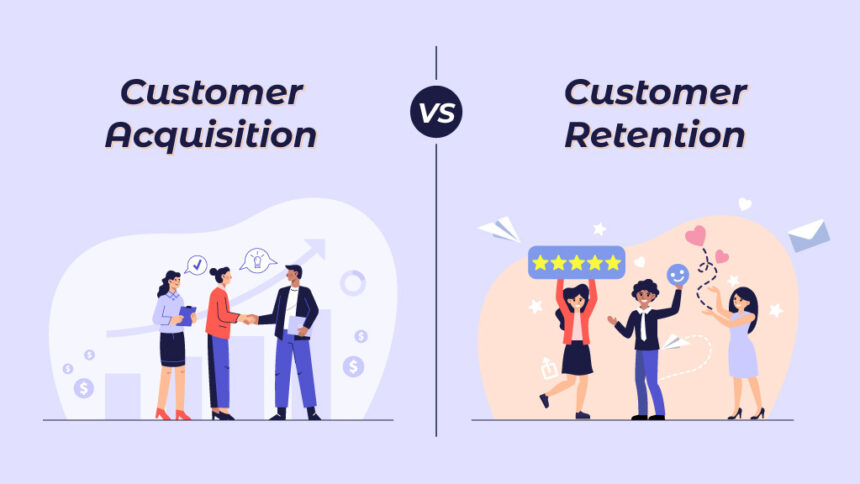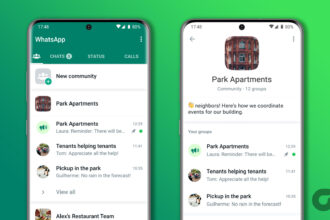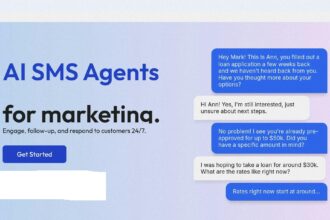Customer Retention is greater than Acquisition:8 Effective Ways to Maintain Buyer Loyalty During Inflation
In today’s economy, inflation is hitting businesses and customers hard. Prices are rising, and people are tightening their budgets. For businesses, getting new customers (acquisition) can be tough and expensive. Keeping existing customers (retention) is often a smarter move. Loyal customers stick around, spend more, and spread the word about your brand. This blog post explains why customer retention beats acquisition during inflation and shares practical tips to keep buyers loyal. Let’s dive into how businesses can thrive by focusing on loyalty in tough economic times.
Why Customer Retention Matters More During Inflation
When inflation drives up costs, acquiring new customers becomes pricier. Marketing campaigns, ads, and promotions eat into budgets, and hesitant shoppers are harder to convince. Studies show it costs five times more to attract a new customer than to keep an existing one. Retention, on the other hand, leverages relationships you already have. Loyal customers are more likely to buy even when prices rise, as they trust your brand and value your products or services.
Retention also boosts profitability. Repeat customers spend 67% more than new ones, according to research. They’re familiar with your offerings and don’t need heavy convincing. Plus, happy customers refer others, giving you free word-of-mouth marketing. During inflation, when every dollar counts, focusing on retention saves money and drives steady revenue.
How Inflation Impacts Customer Behavior
Inflation changes how people shop. Customers become price-sensitive, seeking deals and value. They may switch to cheaper alternatives or cut non-essential spending. However, loyal customers are less likely to jump ship if they feel valued. Understanding this shift is key to building retention strategies that work. Businesses must show customers they’re worth sticking with, even in tough times.
Top Strategies to Keep Customers Loyal During Inflation
Here are actionable ways to boost customer retention and keep buyers coming back, even when inflation squeezes wallets.
1. Prioritize Exceptional Customer Service
Great customer service builds trust and loyalty. During inflation, when customers are stressed about money, a positive experience can set you apart. Train your team to be empathetic, responsive, and solution-focused. Answer questions quickly, resolve issues fairly, and go the extra mile. For example, offer flexible return policies or personalized support. A 2023 survey found that 90% of customers stay loyal to brands with excellent service.
2. Offer Value-Driven Loyalty Programs
Loyalty programs reward repeat customers, encouraging them to keep buying. During inflation, tweak your program to focus on value. Offer discounts, exclusive deals, or points that can be redeemed for essentials. For instance, a grocery store could give bonus points on staple items like bread or milk. Make the program easy to join and use. Starbucks’ rewards program, for example, keeps customers hooked by offering free items after a set number of purchases.
3. Communicate Transparently About Price Changes
Inflation often forces businesses to raise prices. Be honest with customers about why costs are increasing. Share how you’re working to keep prices fair, like sourcing affordable materials or cutting overhead. Transparency builds trust. Send emails or post updates on social media explaining your efforts. Customers appreciate honesty and are more likely to stay loyal if they feel you’re upfront.
4. Provide Flexible Payment Options
When budgets are tight, flexible payment plans make a difference. Offer options like buy-now-pay-later, installment plans, or subscription models. These make your products or services more accessible. For example, a furniture store could offer zero-interest financing to ease the burden of big purchases. Flexible payments show you care about customers’ financial challenges, boosting loyalty.
5. Personalize the Customer Experience
Personalization makes customers feel special. Use data to tailor offers, recommendations, and communications. For instance, send birthday discounts or suggest products based on past purchases. A 2024 study showed that 71% of customers expect personalized experiences, and 76% get frustrated when they don’t receive them. During inflation, personalized deals on items customers need can strengthen their connection to your brand.
6. Focus on Quality and Value
When prices rise, customers want to know they’re getting their money’s worth. Highlight the quality, durability, or unique benefits of your products. For example, a clothing brand could emphasize long-lasting fabrics that justify a higher price. Offer bundles or multi-buy discounts to increase perceived value. Customers are more likely to stay loyal if they feel your products deliver real worth.
7. Stay Engaged Through Multiple Channels
Reach customers where they are. Use email, social media, and text messages to stay connected. Share tips, updates, or exclusive offers to keep your brand top-of-mind. For example, a beauty brand could send skincare tips during inflation to show value beyond products. Engagement builds relationships, making customers less likely to switch to competitors.
8. Show Appreciation for Loyal Customers
A simple “thank you” goes a long way. Recognize loyal customers with small gestures like thank-you notes, exclusive discounts, or early access to new products. During inflation, these acts show you value their support. A local café could offer a free coffee to customers who’ve visited 10 times. Gratitude fosters emotional connections, which drive loyalty.
Balancing Retention and Acquisition
While retention is key during inflation, don’t ignore acquisition entirely. New customers keep your business growing. However, allocate more resources to retention when budgets are tight. Use cost-effective acquisition strategies, like referrals from loyal customers or social media campaigns, to complement your retention efforts. A balanced approach ensures long-term success.
Dont miss: How to Use Customer Feedback to Shape Your Brand
Measuring Customer Retention Success
Track metrics to see if your retention strategies are working. Key indicators include:
- Repeat Purchase Rate: The percentage of customers who buy again.
- Customer Lifetime Value (CLV): The total revenue a customer generates over time.
- Churn Rate: The percentage of customers who stop buying.
- Net Promoter Score (NPS): How likely customers are to recommend your brand.
Use these metrics to tweak your strategies. For example, if churn is high, survey customers to find out why they’re leaving and address those issues.
Real-World Examples of Retention Done Right
- Amazon Prime: Amazon keeps customers loyal with fast shipping, exclusive deals, and streaming services. During inflation, Prime’s value-packed membership encourages repeat purchases.
- Target Circle: Target’s loyalty program offers discounts and personalized deals, making customers feel valued even when prices rise.
- Local Businesses: Small shops often build loyalty through personal connections, like remembering customer names or offering small freebies.
These examples show how focusing on value, service, and engagement keeps customers coming back.
Why Retention Wins in Tough Times
Inflation tests businesses, but it also highlights the power of loyal customers. Retention saves money, boosts profits, and creates advocates who spread the word. By focusing on customer service, value, and trust, businesses can keep buyers loyal even when times are tough. Start implementing these strategies today to build a loyal customer base that weathers any economic storm.
Ready to prioritize retention? Analyze your current customers, launch a loyalty program, and communicate openly. Your buyers will reward you with their loyalty, helping your business thrive during inflation and beyond.
Image source:






